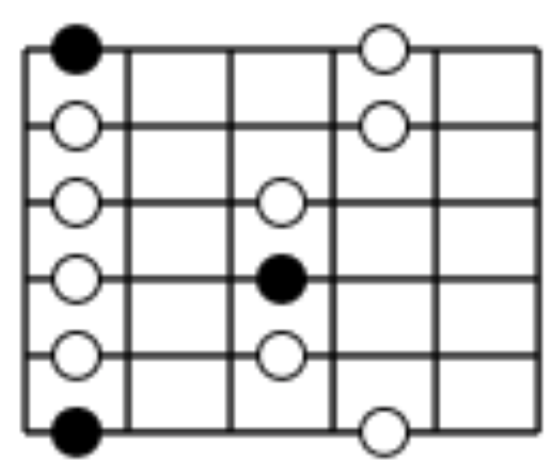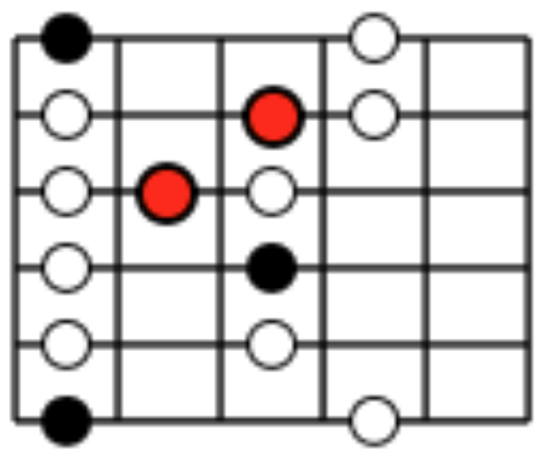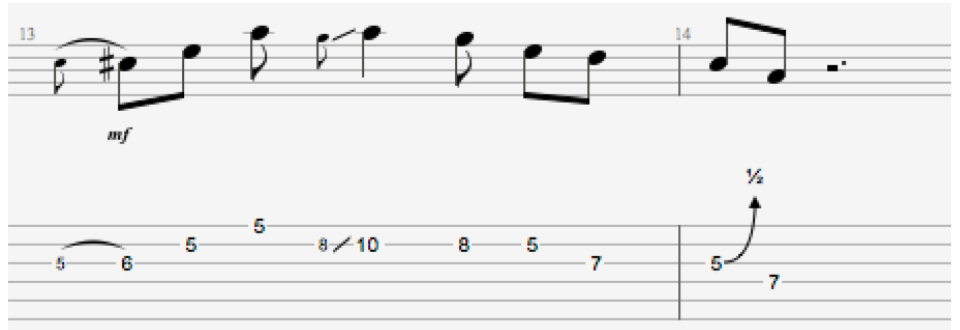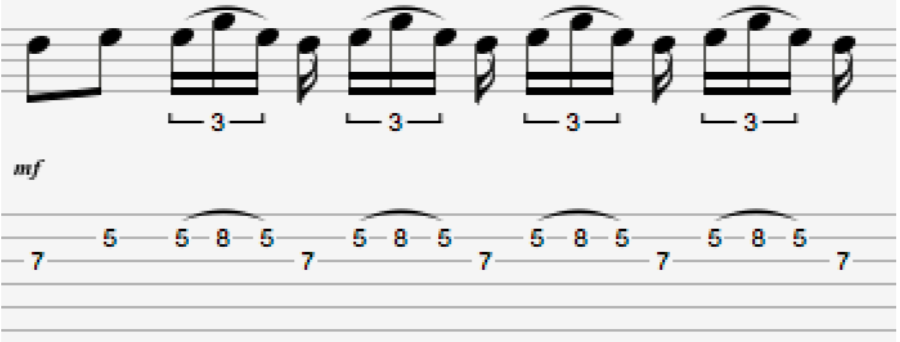Mastering the Pentatonic
Article 1 – Eric Clapton; add a major 3rd
The Pentatonic Scale is the holy grail for guitarists. It’s easy to play and it sounds amazing. This series will show you how to get the most out of our favourite scale, and how making small modifications will get you sounding like the pros and their signature sound.
A key ingredient to Clapton’s sound is blending the major and minor pentatonic. This can be most clearly heard the solo of Cream’s Robert Johnson cover “Crossroads”. The key notes we need to add are themajor 3rd and the 6th (see right), although I would recommend learning box 1 of the major pentatonic in its entirety.
“Crossroads” Lick examples
This lick starts with a hammer on from theminor 3rd to the major 3rd. Not only a quintessential Clapton move, but a very bluesy sound also. We also have a half bend between these two notes in bar 2.
This example utilises the 6th at fret 7 of the B string. This lick is almost split into major pentatonic in the first bar and then minor pentatonic in the second bar. Add vibrato to the C crotchet in bar 2 and pull off the semi quavers.
Clapton Phrasing:
Clapton loves groups of three. This stye of lick can be heard in the guitar ad-libs at the end of “Bad Love”. Use hammer and pulls offs when playing the triplet on the B string
Clapton Articulation:
Clapton’s solo playing is full of string bending, both huge full tone bends and subtle smaller bends. With the full bends, I would always recommend having multiple fingers push the string (1st and 2nd behind the 3rd finger that bends the note). The half bend on the 5th fret of the G string can be achieved with just your 1st finger. Listen to“Cocaine” to hear this in action.












